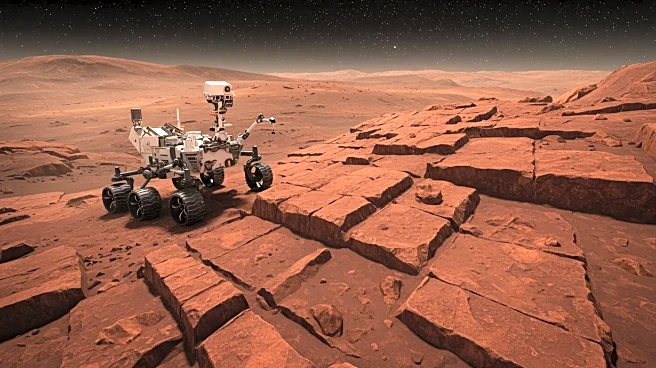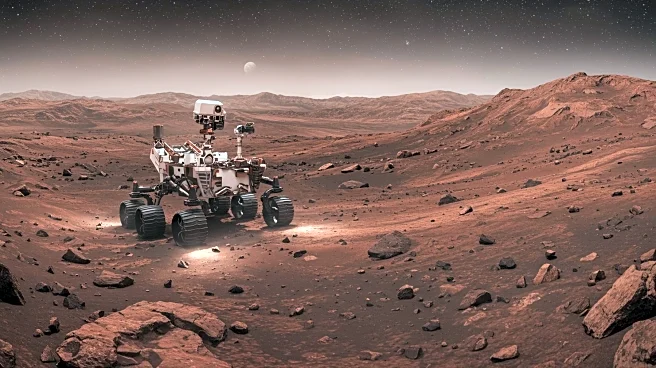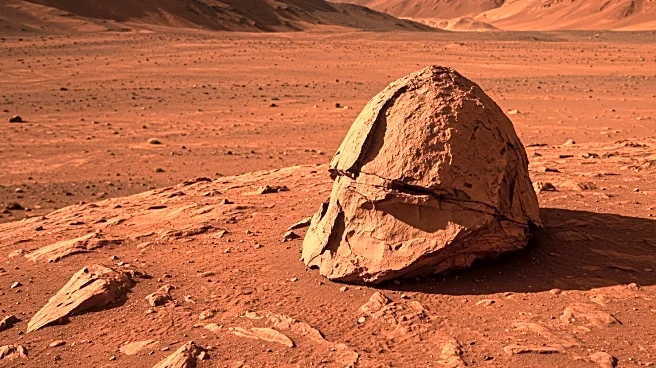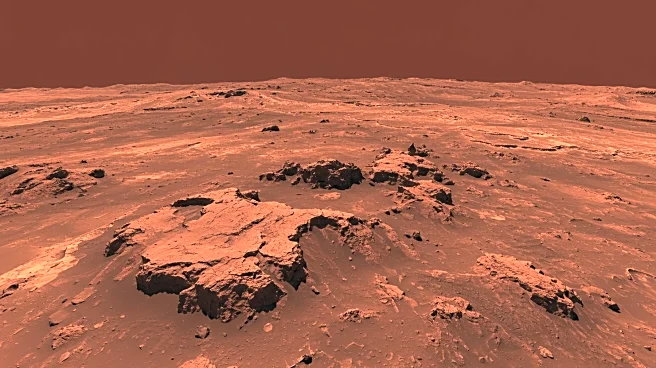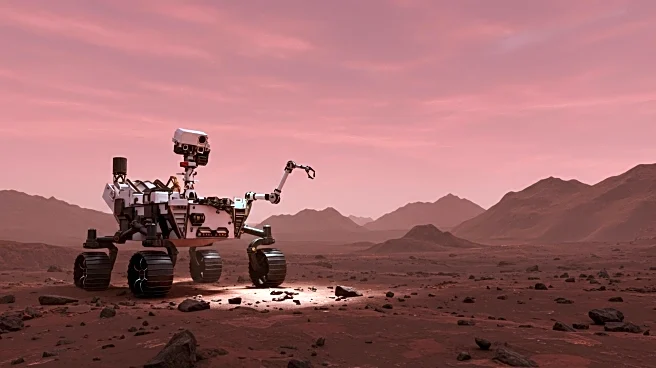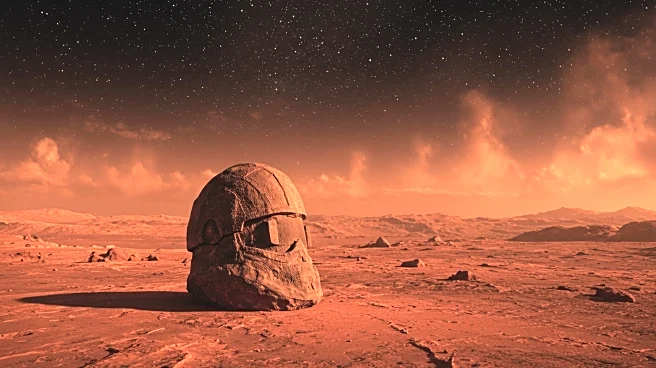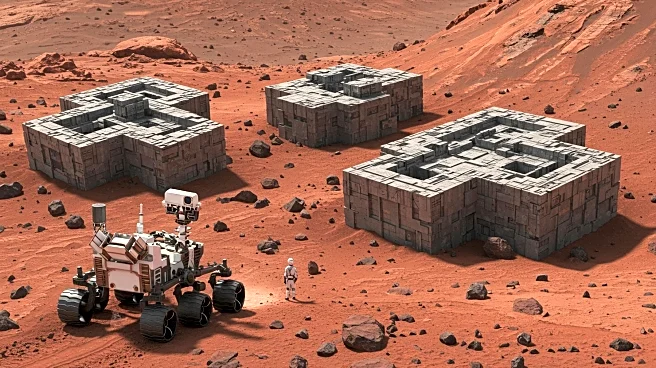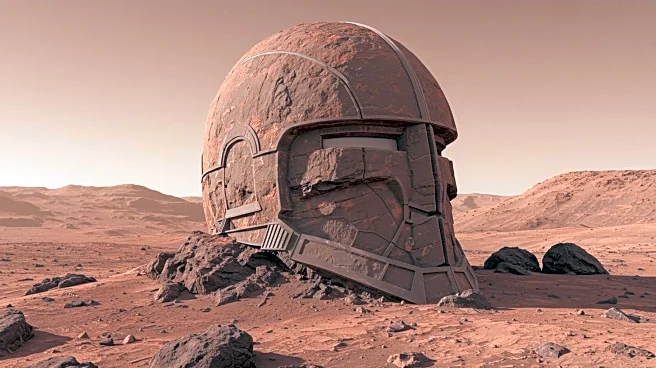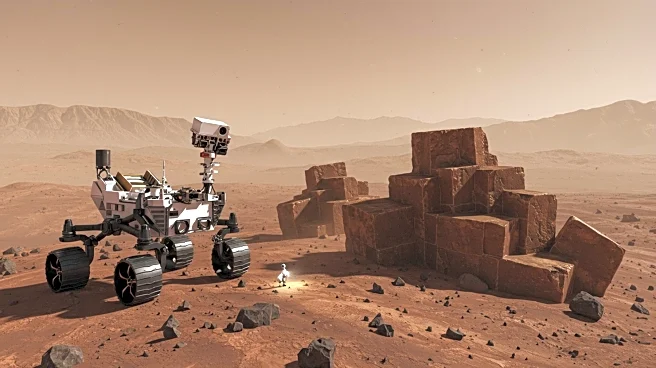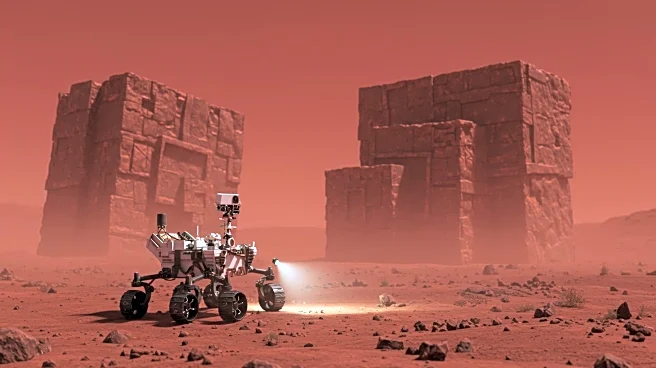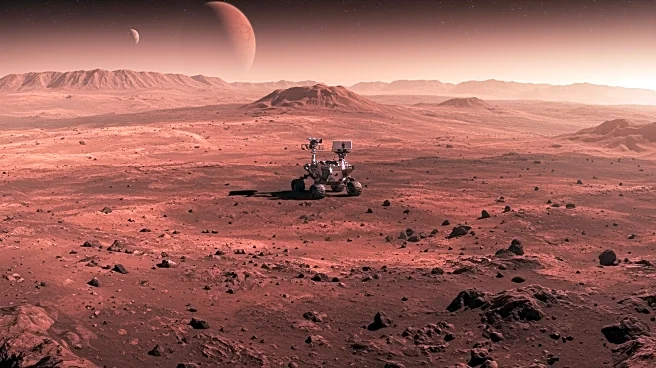What's Happening?
NASA's Curiosity rover is conducting scientific investigations in the boxwork-forming region of Gale Crater on Mars. The rover has captured close-up images of rock targets, revealing bright nodules likely composed of calcium sulfate. Curiosity's instruments, including the Mars Hand Lens Imager and ChemCam, are being used to analyze the composition and structure of the Martian surface. The rover is also monitoring the Martian environment, including atmospheric conditions and neutron flux.
Why It's Important?
Curiosity's exploration of Mars provides critical data on the planet's geology and environmental conditions, contributing to our understanding of its history and potential habitability. The rover's findings may inform future missions and the search for signs of past life on Mars. The ongoing research enhances our knowledge of planetary science and the processes that shape celestial bodies.
What's Next?
Curiosity will continue its journey through Gale Crater, conducting further contact science and imaging investigations. The rover's next drive aims to reach a hollow where additional studies of erosionally recessive bedrock will be conducted. Scientists will analyze the data collected to gain insights into the geological history of Mars and its potential for supporting life.
Beyond the Headlines
The mission underscores the importance of robotic exploration in advancing space science and technology. It highlights the challenges and achievements of operating a rover on another planet, as well as the collaborative efforts of scientists and engineers in achieving mission goals. The research may also inspire future generations to pursue careers in space exploration and planetary science.
